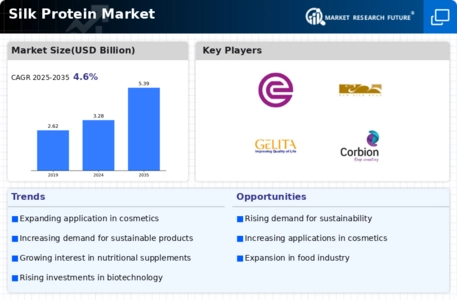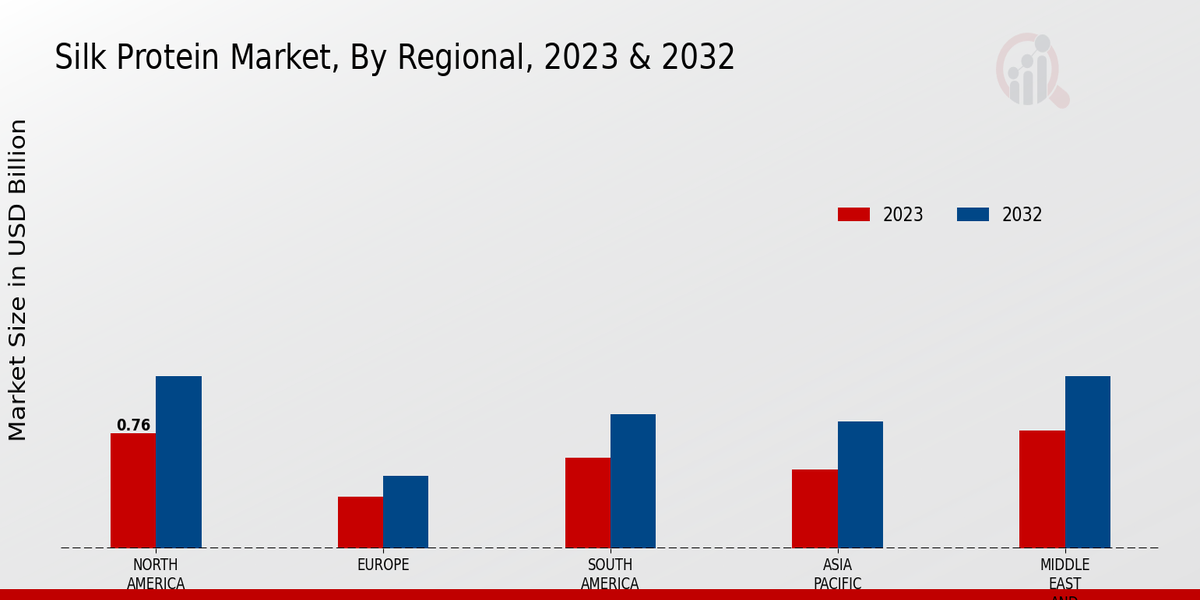Market Growth Projections
Emerging Markets and Global Expansion
The Global Silk Protein Market Industry is poised for growth in emerging markets, where rising disposable incomes and changing consumer preferences are creating new opportunities. Countries in Asia-Pacific and Latin America are witnessing an increase in demand for silk protein across various applications, including textiles, cosmetics, and food. This trend is indicative of a broader global expansion, as manufacturers seek to tap into these markets. The projected market value of 3.28 USD Billion in 2024 underscores the potential for growth in these regions, as they increasingly adopt silk protein in their product offerings.
Rising Demand for Sustainable Products
The Global Silk Protein Market Industry is witnessing a notable increase in demand for sustainable and eco-friendly products. As consumers become more environmentally conscious, they are seeking alternatives to synthetic materials. Silk protein, derived from natural sources, offers a biodegradable option that aligns with these preferences. This shift towards sustainability is expected to drive market growth, with the industry projected to reach 3.28 USD Billion in 2024. The appeal of silk protein in cosmetics and personal care products further enhances its market potential, as brands increasingly incorporate natural ingredients to meet consumer expectations.
Increasing Awareness of Health Benefits
The Global Silk Protein Market Industry is benefiting from a growing awareness of the health benefits associated with silk protein consumption. Rich in amino acids and essential nutrients, silk protein is being recognized for its potential to support skin health, hair vitality, and overall wellness. This increasing recognition is driving demand in dietary supplements and functional foods, as consumers seek natural ingredients that promote health. The market's expansion is further supported by the projected growth to 5.39 USD Billion by 2035, suggesting that health-conscious consumers are likely to drive the silk protein market forward.
Technological Advancements in Silk Production
The Global Silk Protein Market Industry is experiencing advancements in silk production technologies, which are enhancing the efficiency and sustainability of silk extraction processes. Innovations such as bioengineering and fermentation techniques are being explored to produce silk proteins more sustainably and at a lower cost. These developments not only improve the yield of silk protein but also reduce the environmental impact associated with traditional silk farming. As these technologies mature, they are expected to contribute to the growth of the market, making silk protein more accessible to various industries, including textiles and food.
Growth in Cosmetic and Personal Care Applications
The Global Silk Protein Market Industry is significantly benefiting from its applications in the cosmetic and personal care sectors. Silk protein is recognized for its moisturizing and skin-repairing properties, making it a sought-after ingredient in various beauty products. As the global beauty market continues to expand, the demand for silk protein is likely to increase. This trend is supported by the industry's projected growth to 5.39 USD Billion by 2035, indicating a compound annual growth rate of 4.61% from 2025 to 2035. The versatility of silk protein in formulations enhances its attractiveness to manufacturers aiming to innovate.















